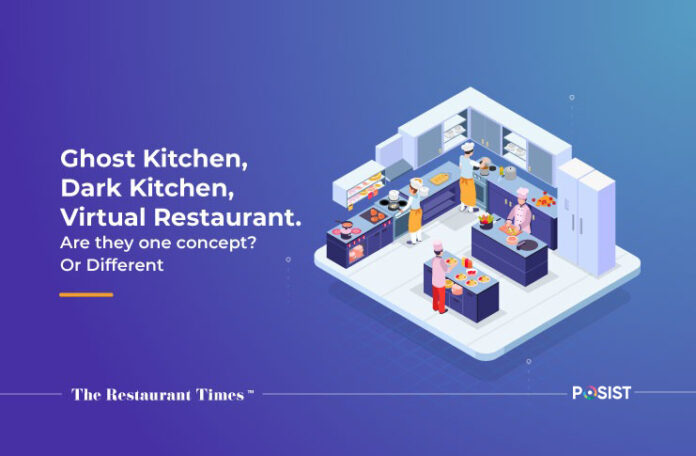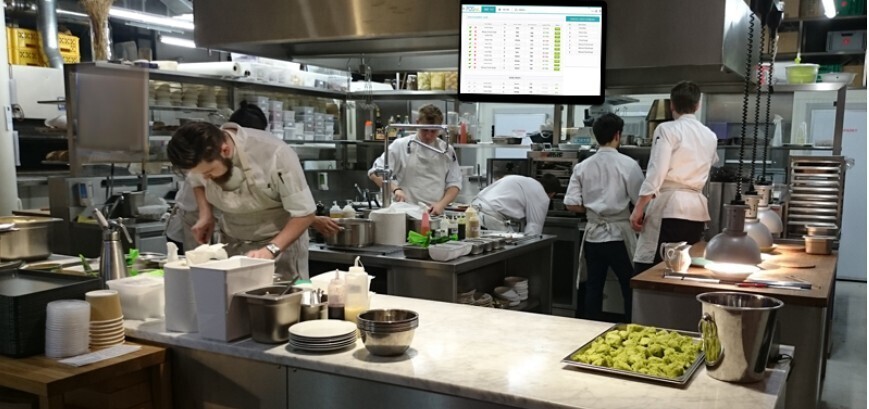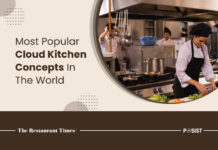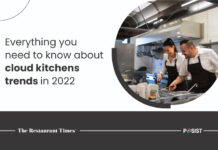The coming of a new age no-dine-in restaurant concept has caught everyone’s attention in the restaurant industry. This unique restaurant format lacks physical space, requires no hefty capital investments, operates on bare minimum restaurant rentals, and relies only on delivery orders. Known for its simplicity and cost-effectiveness, it is an ideal platform for food entrepreneurs to enter into the restaurant segment and establish a foothold in the market. As the restaurant industry welcomes this emerging trend, operators are also looking at the best ways to define the delivery-only model. We have heard terms like ‘cloud kitchen,’ ‘dark kitchen,’ ‘ghost kitchen,’ and ‘virtual restaurants’ being used to define this delivery-only model. Are these definitions of the same model? Or are they different?
This blog post answers all such queries and uncovers the right interpretation of this revolutionary model.
Briefing The Delivery-Only Restaurant Format
In the last few years, there has been a rapid growth of the delivery-only restaurant business. According to statistics, the overall revenue in the food delivery market is expected to show an annual growth rate of 7.5%. This has also given rise to a significant number of delivery-only restaurant formats, which are termed as cloud kitchens, dark kitchens, virtual restaurants, or ghost kitchens. All these terms are reasonably interchangeable and define the same concept that focuses on providing good quality food delivered to the customer’s doorstep.
Being considered as the smarter way of running a restaurant business, this restaurant format doesn’t require a large space or a lot of staff to operate. As there are no front-of-house operations, cloud kitchens save substantially on the infrastructure costs. The infrastructure is only limited to the kitchen area, and operators can leverage the same space to run multiple brands from the same kitchen.
Setting up a cloud kitchen requires lower overhead costs when compared to setting up a physical restaurant. Moreover, opening a ghost kitchen involves a one-time investment as there are no hidden or maintenance costs. In fact, the only major cost center for a virtual restaurant is establishing a robust delivery network and investing in high-quality packaging.
Typically the virtual restaurants receive online orders via;
- Third-party food aggregators where the aggregator platforms handle the entire delivery operations
- Online ordering website or mobile app. The cloud kitchen operators handle the entire logistics by establishing its own delivery fleet or outsourcing to a third party.
- Call-center panel; as soon as the customers place an order, the Call-Center panel routes the orders to the respective brand and outlet.
How Does A Cloud/Ghost/ Dark Kitchen Work In General
- Customers place their orders via website/mobile app, hotline numbers, online aggregator platforms such as Zomato, Swiggy, Foodpanda, Ubereats, etc. The cloud kitchen outlets directly receive the order along with the customer details.
- The cloud kitchen POS pushes the orders directly to the kitchen staff. In the case of multiple brands, the kitchen staff receives brand-specific order details. The Kitchen Display System is helpful as it displays orders along with the recipe requirements on a screen. This enables your staff to keep track of all the orders that have to be prepared.
- After receiving the orders, the kitchen staff begins food preparation. In the case of multiple brands, the same chef may prepare food for multiple different brands. Depending upon the number of cuisines or order volume, dark kitchens can also appoint more than one chef, each designated for a certain brand.
- As soon as the food is prepared, it is packed under proper supervision and procedures. As packaging is crucial in ensuring an excellent delivery service, virtual restaurants emphasize on ensuring that the food is packaged and handled well.
- The appointed delivery executive reaches the outlet and collects the food parcel in order to ensure timely food delivery.
There may be different terms that define the delivery-only restaurant business, but the fact remains the same-It’s a great business to be in. Considering the growing popularity of food delivery, entrepreneurs may find the delivery-only format very attractive as it requires less capital and provides plenty of opportunities for business growth. All in all, cloud kitchens are undoubtedly here to stay, which makes it the best time to invest in a cloud kitchen/dark kitchen/ghost kitchen business.


















